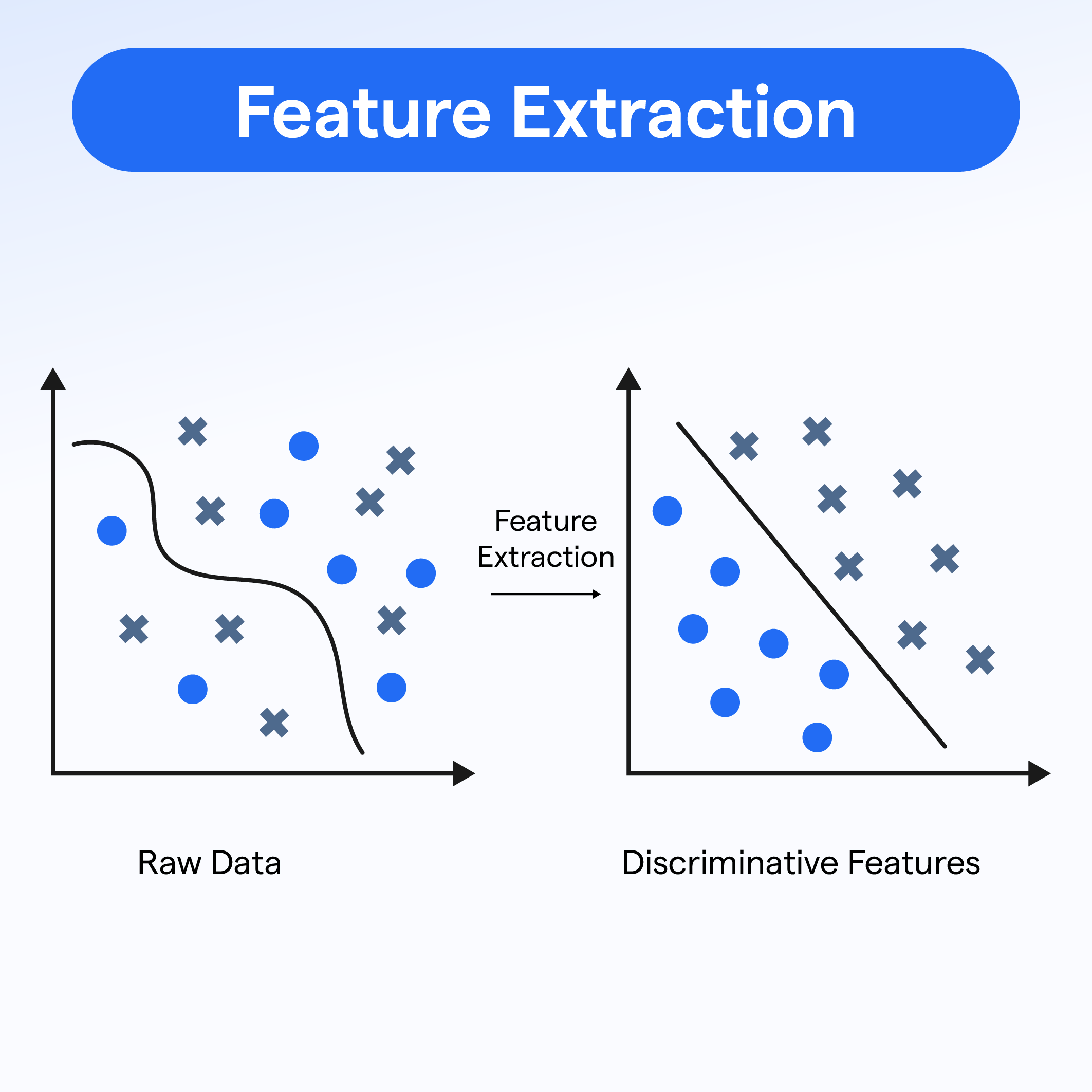What is Feature Extraction?
Feature extraction is a crucial process in artificial intelligence (AI) that involves identifying and extracting relevant information from raw data. This extracted information, also known as features, is then used to train machine learning models, enabling them to make accurate predictions or decisions.
- Briefly describe feature extraction in AI
- Explain its importance in machine learning models

Where can you find AI Feature Extraction models
This is the link to use to filter Hunggingface models for Feature Extraction:
https://huggingface.co/models?pipeline_tag=feature-extraction&sort=trending
Our favourite Model Authors:
The most interesting Feature Extraction project
One of the most interesting Table Question Answering projects is called NV-Embed-v2.
We present NV-Embed-v2, a generalist embedding model that ranks No. 1 on the Massive Text Embedding Benchmark (MTEB benchmark)(as of Aug 30, 2024) with a score of 72.31 across 56 text embedding tasks. It also holds the No. 1 in the retrieval sub-category (a score of 62.65 across 15 tasks) in the leaderboard, which is essential to the development of RAG technology.
NV-Embed-v2 presents several new designs, including having the LLM attend to latent vectors for better pooled embedding output, and demonstrating a two-staged instruction tuning method to enhance the accuracy of both retrieval and non-retrieval tasks. Additionally, NV-Embed-v2 incorporates a novel hard-negative mining methods that take into account the positive relevance score for better false negatives removal.
https://huggingface.co/nvidia/NV-Embed-v2Applications of Feature Extraction
Feature extraction has numerous applications across various industries, including:
- Image recognition: Feature extraction is used to identify objects, scenes, and activities within images and videos.
- Natural Language Processing (NLP): Feature extraction helps extract meaningful information from text data, such as sentiment analysis and named entity recognition.
- Speech recognition: Feature extraction is employed to recognize spoken words and phrases.
- Time-series forecasting: Feature extraction is used to identify patterns and trends in time-stamped data.
- Recommendation systems: Feature extraction helps recommend products or services based on user behavior and preferences.
Examples of Feature Extraction Techniques
Several techniques are used for feature extraction, including:
- Principal Component Analysis (PCA): PCA reduces dimensionality by transforming correlated variables into orthogonal components.
- Independent Component Analysis (ICA): ICA separates mixed signals into independent components.
- AUTOENCODERS: AUTOENCODERS learn to compress and reconstruct data, preserving important features.
- Convolutional Neural Networks (CNNs): CNNs extract features from images using convolutional and pooling layers.
- Word embeddings: Word embeddings represent words as vectors in a high-dimensional space, capturing semantic relationships.
Benefits and Challenges of Feature Extraction
The benefits of feature extraction include:
- Improved model performance: Relevant features lead to better model accuracy and generalizability.
- Reduced dimensionality: Feature extraction can handle high-dimensional data, making it easier to analyze and visualize.
- Increased interpretability: Extracted features provide insights into the underlying structure of the data.
However, feature extraction also presents several challenges:
- Data quality issues: Poor-quality data can lead to biased or irrelevant features.
- Overfitting: Models may overfit to the extracted features, resulting in poor generalization.
- Computational complexity: Some feature extraction techniques can be computationally expensive.
Real-world Applications of Feature Extraction
Feature extraction has been successfully applied in various industries, including:
- Medical diagnosis: Feature extraction helps doctors diagnose diseases by analyzing medical images and patient data.
- Customer segmentation: Feature extraction identifies customer segments based on demographic and behavioral data.
- Financial forecasting: Feature extraction predicts stock prices and market trends using historical data.
Conclusion
Feature extraction is a vital component of machine learning models, enabling them to make accurate predictions or decisions. Its applications span various industries, and several techniques are available for feature extraction. While feature extraction offers numerous benefits, it also presents challenges that must be addressed. As the field of AI continues to evolve, feature extraction will remain an essential step in developing effective machine learning models.
For further reading, we recommend exploring the following resources:
- [1] "Feature Extraction Methods for Image Classification" by IEEE Xplore
- [2] "A Survey of Feature Extraction Techniques for Time-Series Data" by arXiv
- [3] "Deep Learning for Natural Language Processing" by Stanford University
How to setup an Feature Extraction LLM on Ubuntu Linux
If you are ready to setup your first Feature Extraction system follow the instructions in our next page:
How to setup a Feature Extraction system
Image sources
Figure 1: https://cdn.botpenguin.com/assets/website/Feature_Extraction_14fa61bcea.webp
More information
- AI Text Classification
- What is AI Token classification
- What is Table Question Answering in AI
- What is Question Answering in AI
- What is Zero-Shot Classification in AI
- What is Translation in AI
- What is Text AI Summarization
- What is Feature Extraction in AI
- What is Text Generation in AI
- What is Text2Text Generation in AI
- What is Fill-Mask in AI
- What is Sentence Similarity in AI

